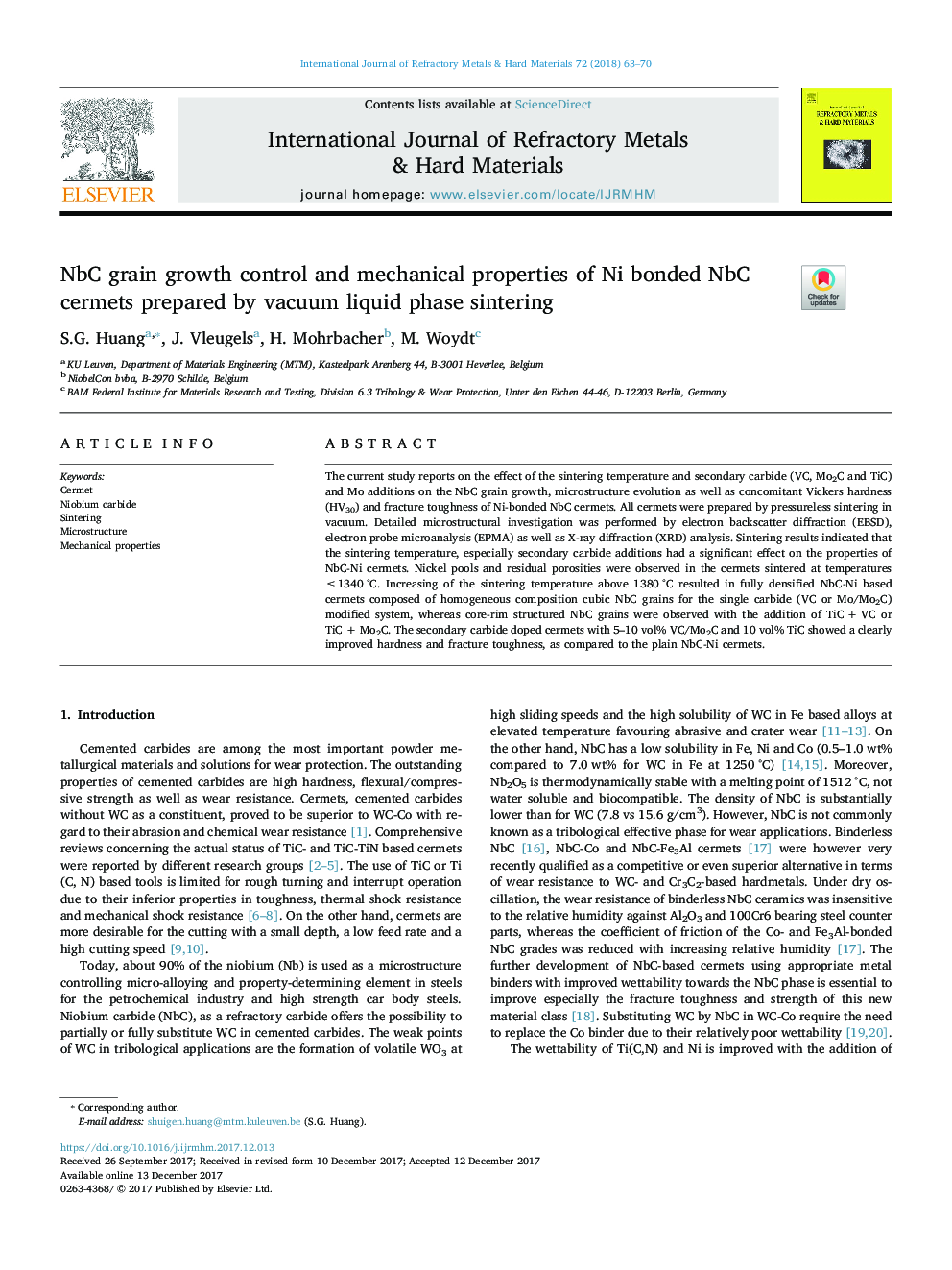| Article ID | Journal | Published Year | Pages | File Type |
|---|---|---|---|---|
| 7989848 | International Journal of Refractory Metals and Hard Materials | 2018 | 8 Pages |
Abstract
The current study reports on the effect of the sintering temperature and secondary carbide (VC, Mo2C and TiC) and Mo additions on the NbC grain growth, microstructure evolution as well as concomitant Vickers hardness (HV30) and fracture toughness of Ni-bonded NbC cermets. All cermets were prepared by pressureless sintering in vacuum. Detailed microstructural investigation was performed by electron backscatter diffraction (EBSD), electron probe microanalysis (EPMA) as well as X-ray diffraction (XRD) analysis. Sintering results indicated that the sintering temperature, especially secondary carbide additions had a significant effect on the properties of NbC-Ni cermets. Nickel pools and residual porosities were observed in the cermets sintered at temperatures â¤Â 1340 °C. Increasing of the sintering temperature above 1380 °C resulted in fully densified NbC-Ni based cermets composed of homogeneous composition cubic NbC grains for the single carbide (VC or Mo/Mo2C) modified system, whereas core-rim structured NbC grains were observed with the addition of TiC + VC or TiC + Mo2C. The secondary carbide doped cermets with 5-10 vol% VC/Mo2C and 10 vol% TiC showed a clearly improved hardness and fracture toughness, as compared to the plain NbC-Ni cermets.
Related Topics
Physical Sciences and Engineering
Materials Science
Metals and Alloys
Authors
S.G. Huang, J. Vleugels, H. Mohrbacher, M. Woydt,
